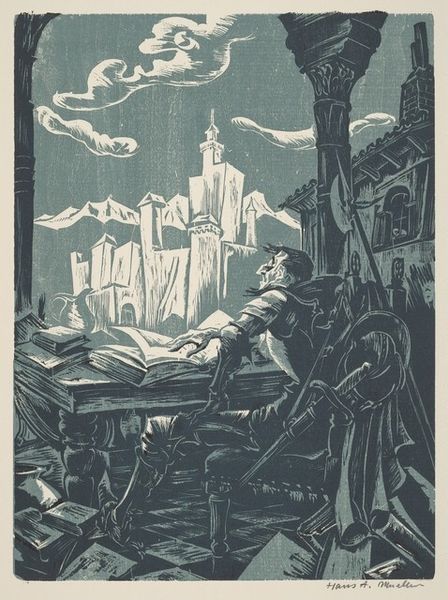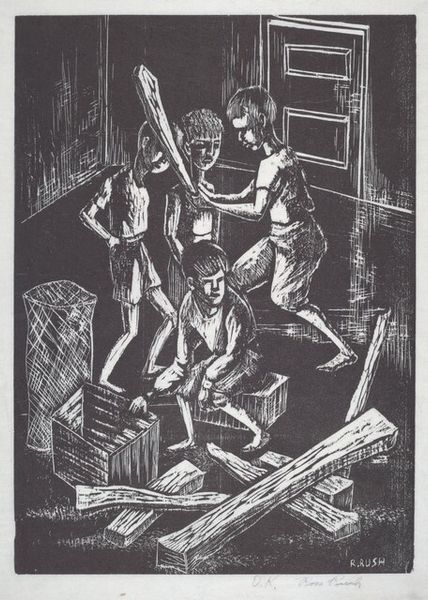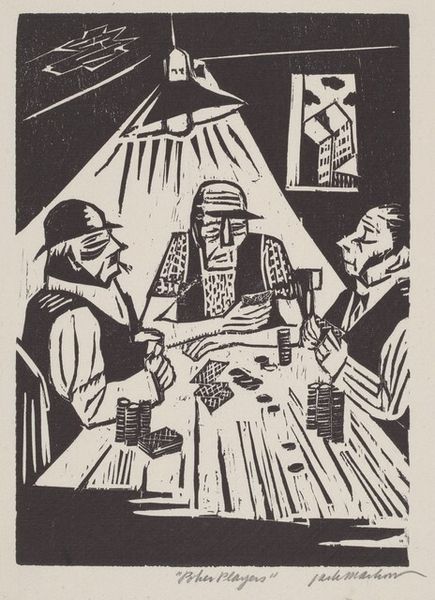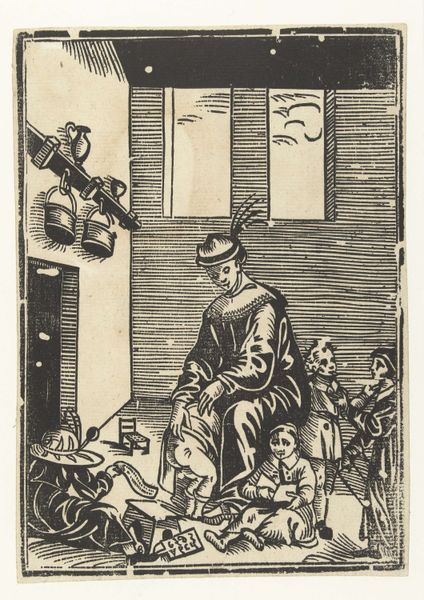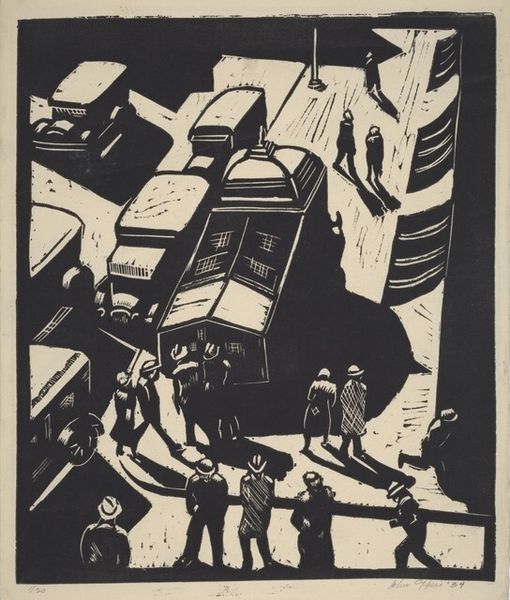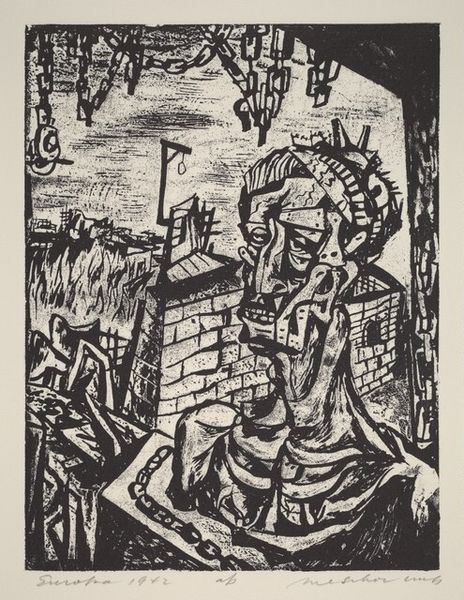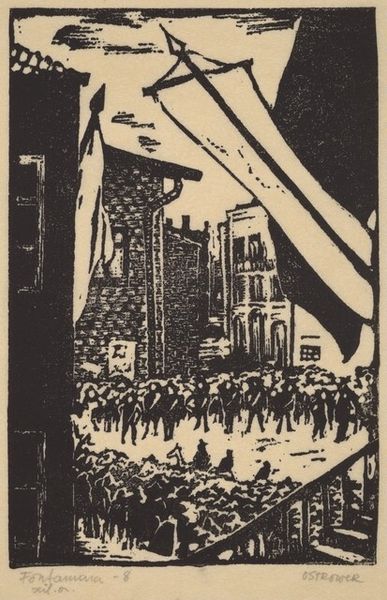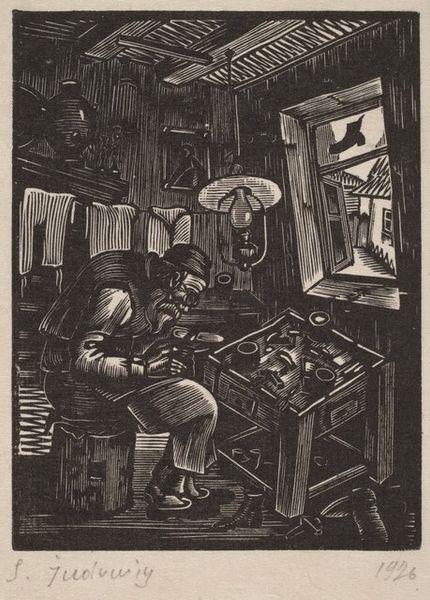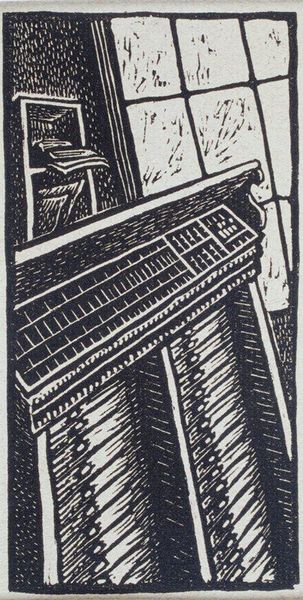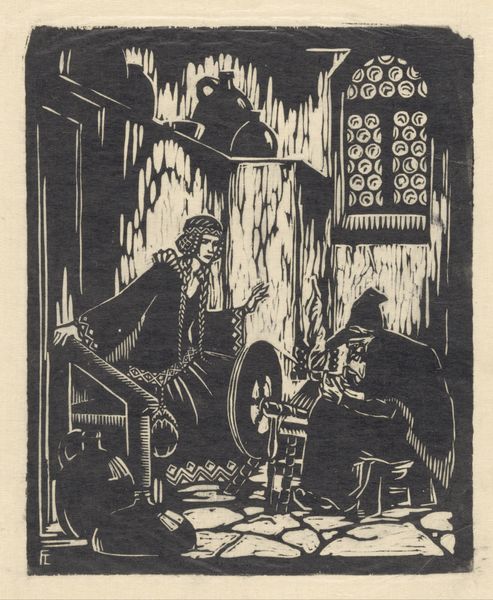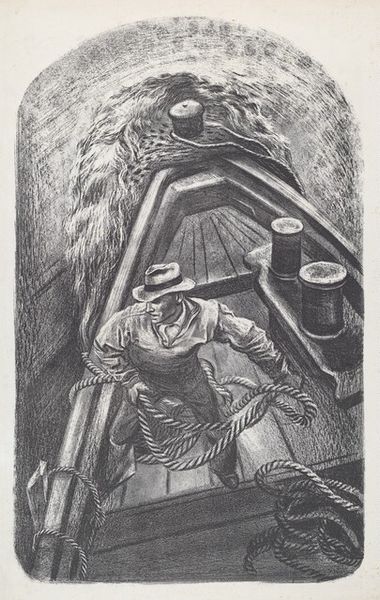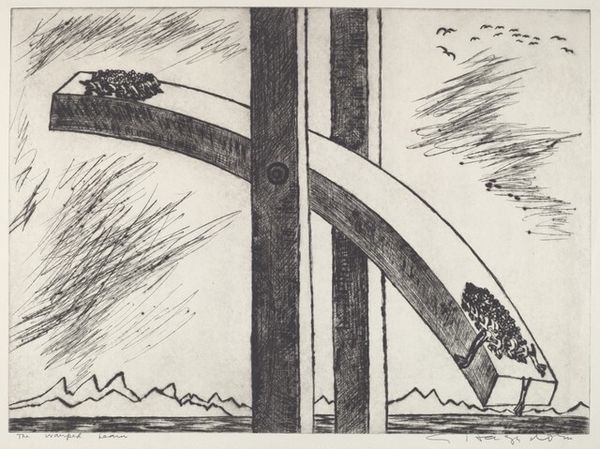
print, woodcut
# print
#
woodcut
#
cityscape
#
history-painting
#
modernism
#
realism
Dimensions: image: 26.5 × 14 cm (10 7/16 × 5 1/2 in.) sheet: 32 × 18 cm (12 5/8 × 7 1/16 in.)
Copyright: National Gallery of Art: CC0 1.0
Editor: This is "Riveters," a 1929 woodcut print by Michael Joseph Gallagher. It depicts two workers seemingly perched high up on a construction site. The stark black and white and sharp angles create a feeling of precariousness, and that towering structure looms over them. What do you see in this piece? Curator: Well, immediately I'm drawn to the powerful symbolism of construction and industry in the early 20th century. These "riveters" were forging the modern world. The height evokes aspiration and also precariousness, physically, but also culturally. Consider the figure in the hat, looking away – what is he seeing, what is he remembering? Editor: So, is that a commentary, you think, on the cost of progress? The psychological weight of it all? Curator: Precisely. Note how the lines above them become almost cloudlike, even ethereal. The artist has consciously presented this work within an ideological framework beyond documenting labour. This era sought the "sublime," both the terrifying and awe-inspiring, often concurrently. Where does the sublime manifest in "Riveters"? Editor: Maybe that towering beam and the height at which they're working is that “sublime.” A symbol for their contribution but a risk too. The repetitive nature of the rivet heads and those sharply defined lines seems almost oppressive now. Curator: It speaks to the psychological burden carried by laborers. Do you see a modern parallel? Consider today's 'essential' worker in times of public stress. What icons are constructed around them, what roles do they perform, and what cultural symbols define their moment? Editor: That makes me see it differently. It’s not just a historical image but maybe a recurring commentary on labor and societal expectations. I’ll think about that. Curator: Exactly. It is a visual touchstone linking us across decades to symbols we have always sought to empower and endure, culturally.
Comments
No comments
Be the first to comment and join the conversation on the ultimate creative platform.
